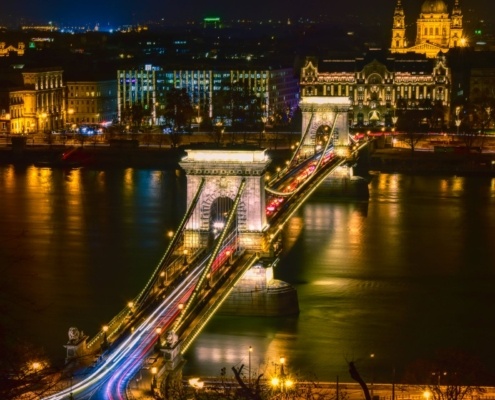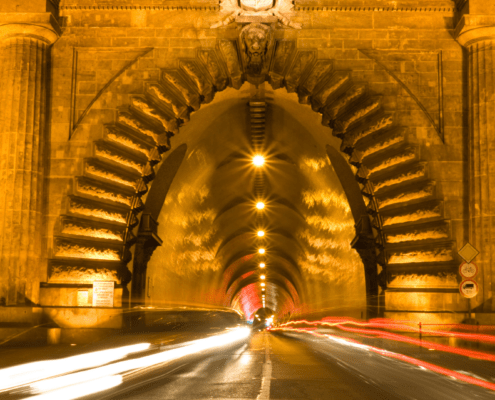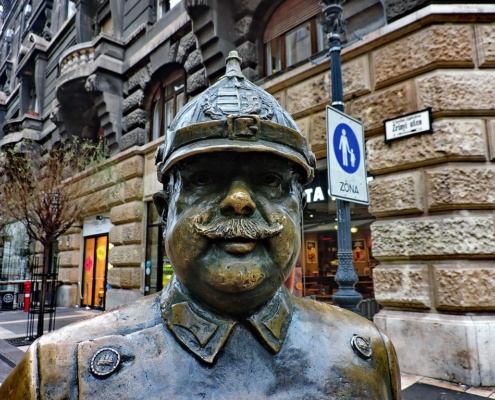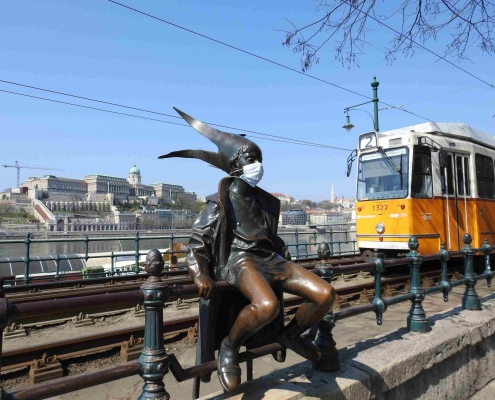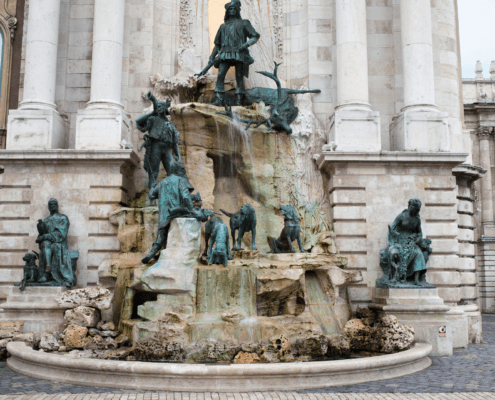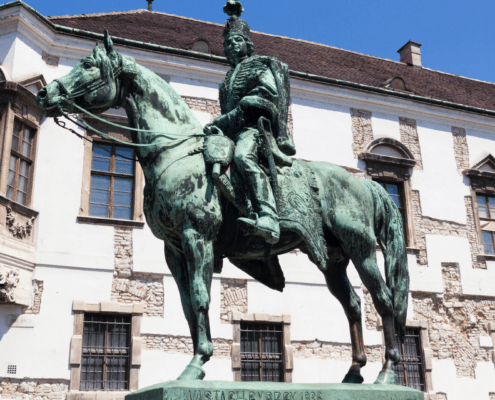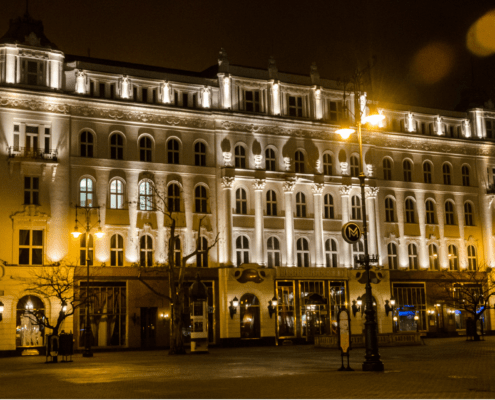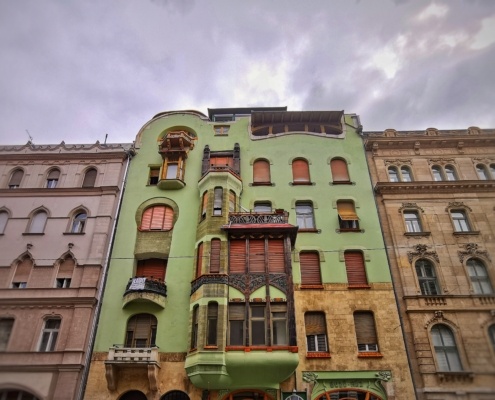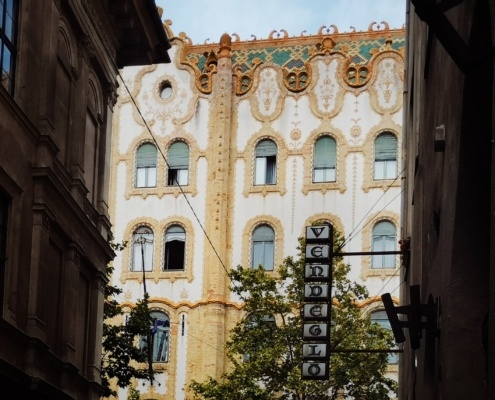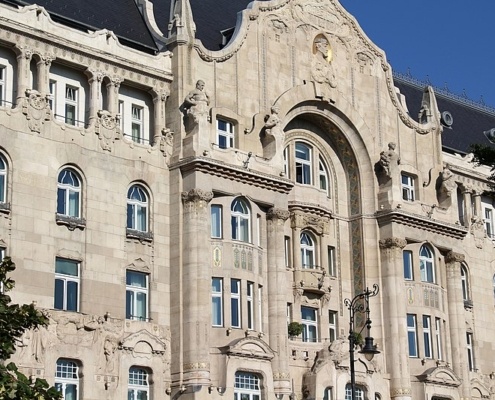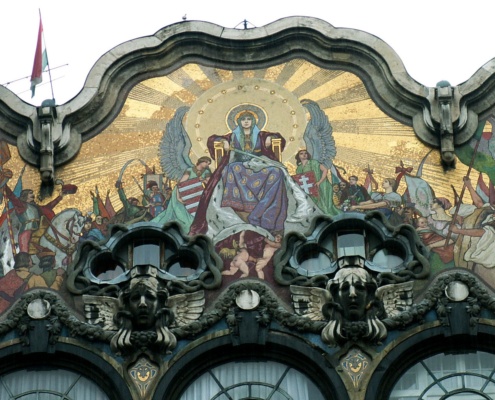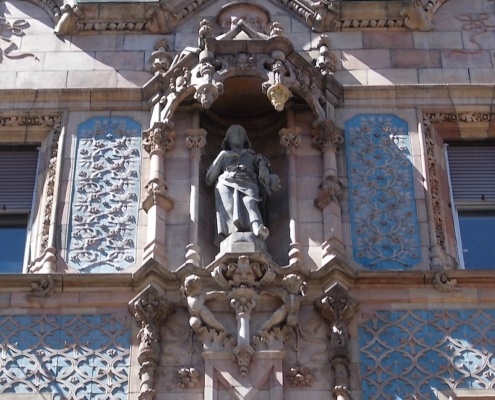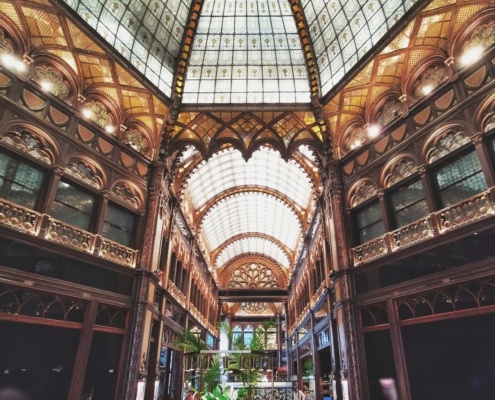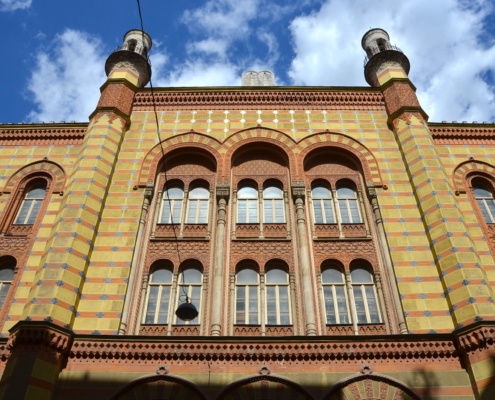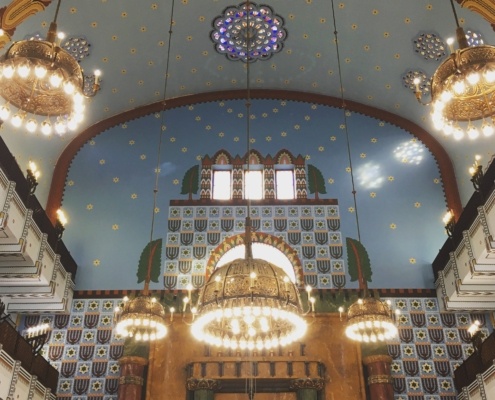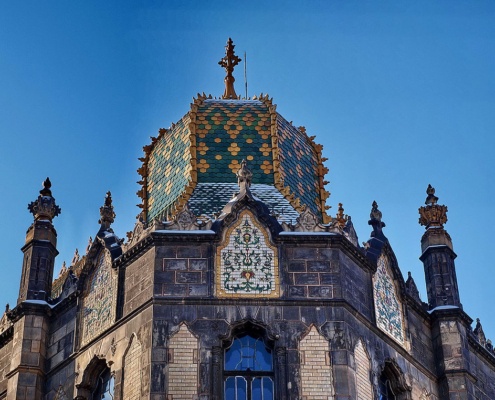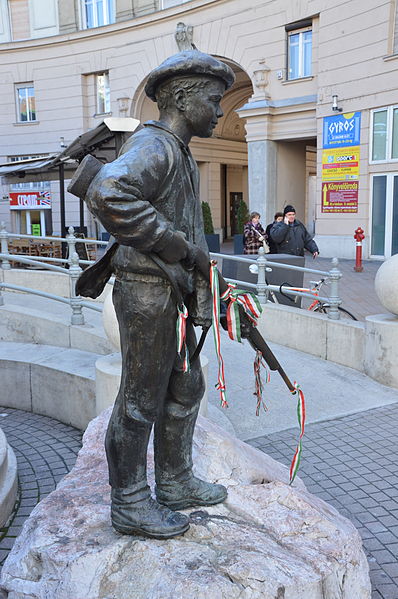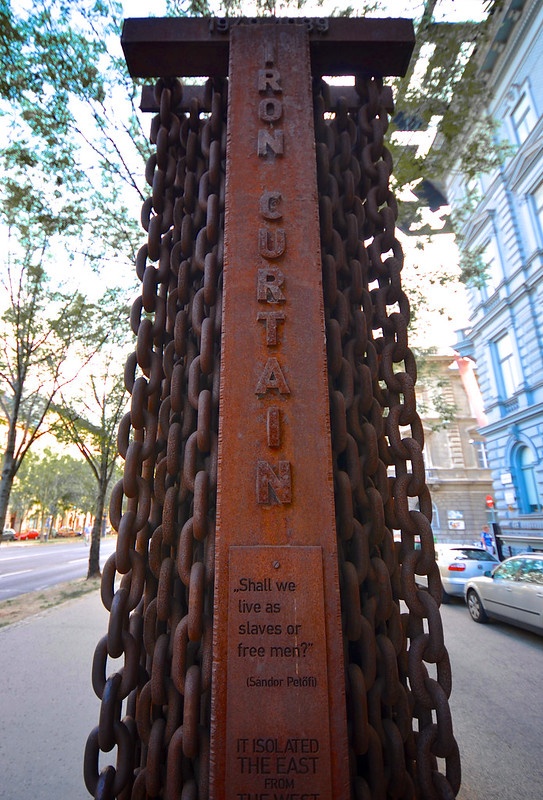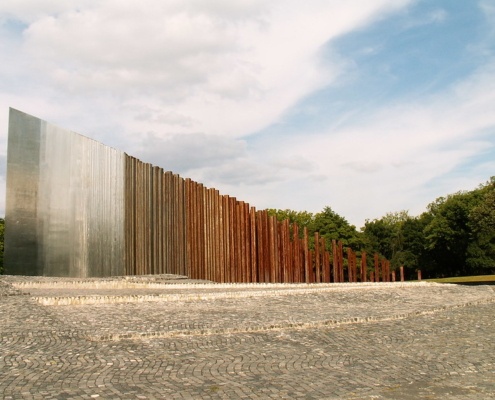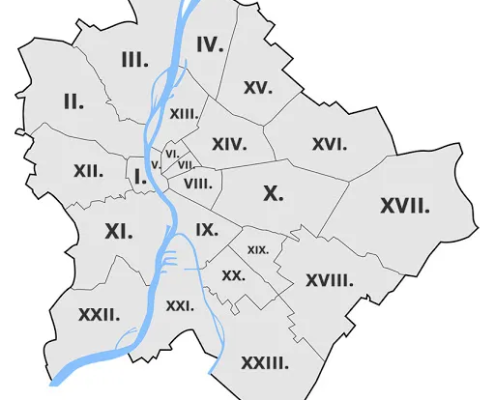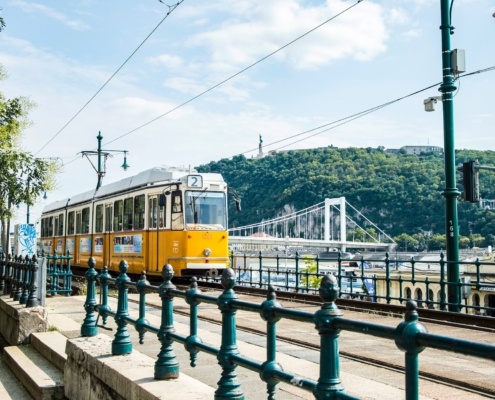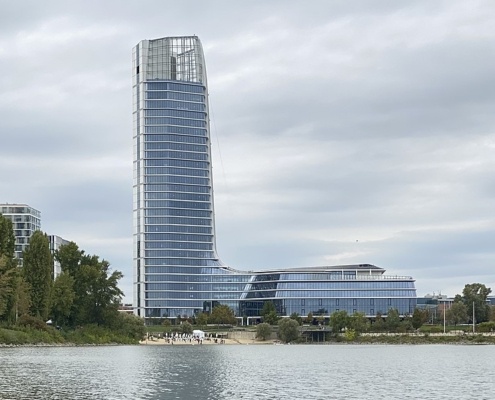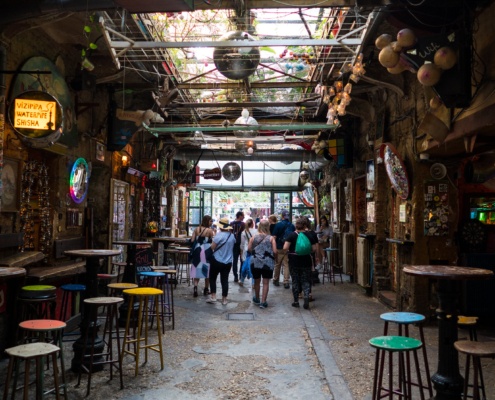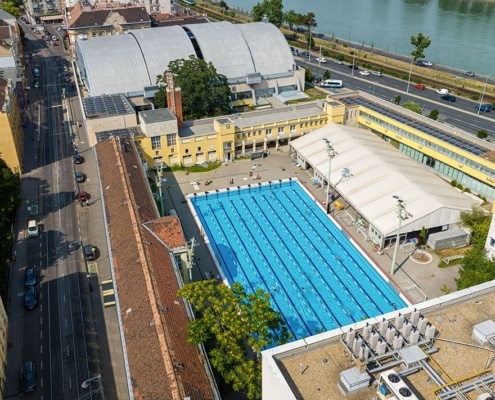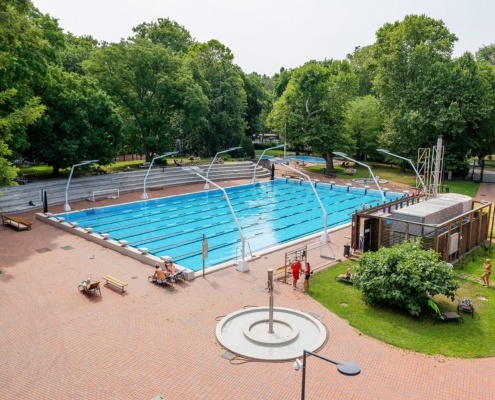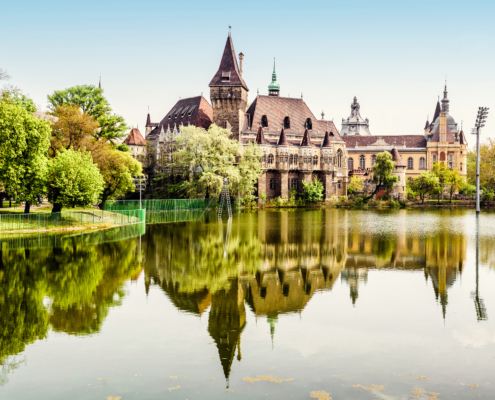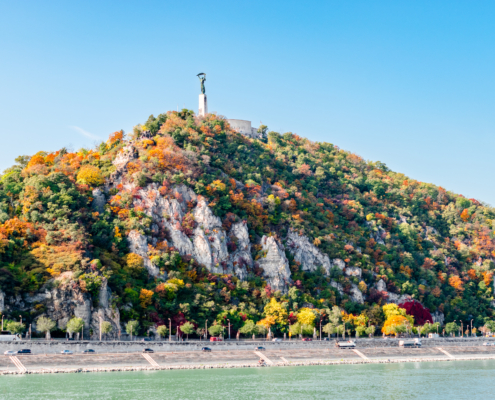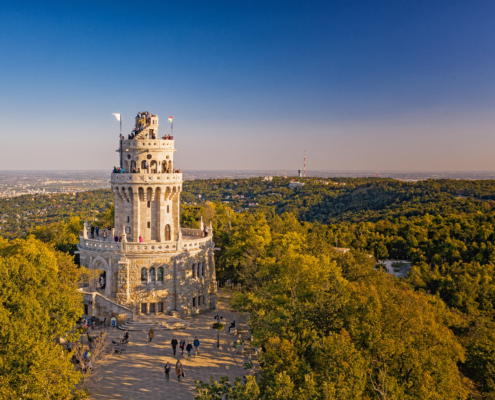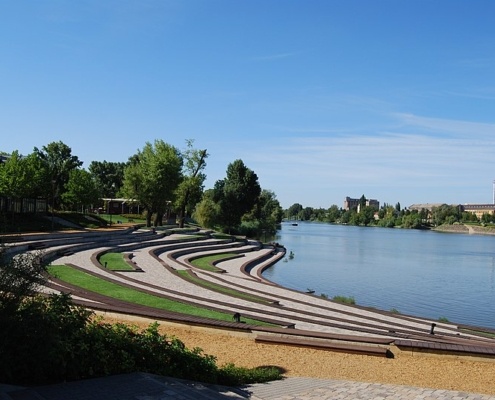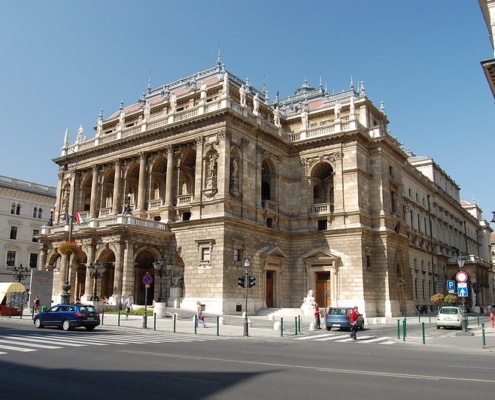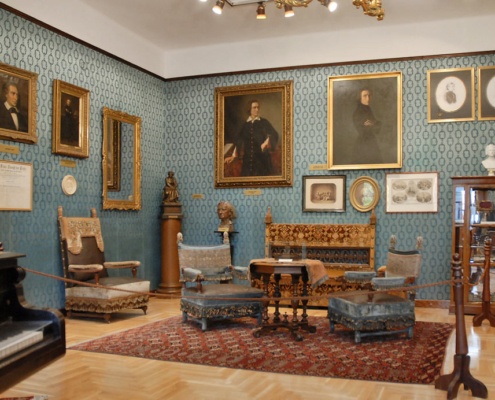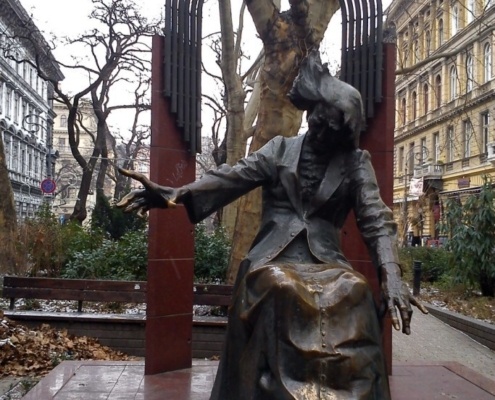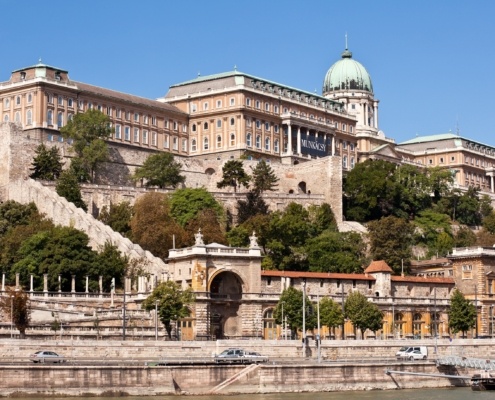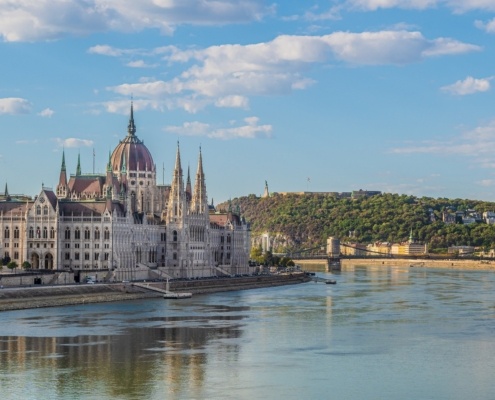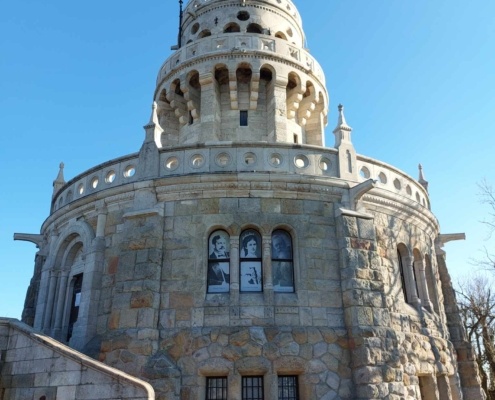There are many ways to write a travel guide to Budapest. There are so many sights and beautiful buildings to see, but for first-time visitors usually the superlatives are important. It is the easiest way to cover many of the must-visit places and remembering the superlatives makes it easy to impress others, as sharing these facts might lead them to think you’re quite knowledgeable about Budapest.
Budapest, the vibrant capital of Hungary, is not only known for its rich history, stunning architecture, and thermal baths but also for its impressive collection of superlatives. Let us help you with our travel guide to Budapest to discover the longest road, highest point, tallest building, and biggest church and synagogue that Budapest has to offer.
The Longest Touristy Road: Andrassy Avenue
This Avenue stretches approximately 2,5 km from the City Center ( Deák Ferenc tér, M1, M2, M3) to the City Park (Heroes’ Square M1)
Notable landmarks along the avenue are:
- Hungarian State Opera House: A stunning neo-Renaissance opera house known for its grand architecture and world-class performances.
- House of Terror Museum: A museum housed in the former headquarters of the Nazi and Communist regimes, offering insights into Hungary’s dark history.
- Franz Liszt Academy of Music: A prestigious music conservatory founded by composer Franz Liszt, featuring beautiful Art Nouveau architecture.
- Oktogon Square: A bustling square at the intersection of Andrassy Avenue and Király Street, known for its vibrant atmosphere and lively street scenes.
- Heroes’ Square (Hősök tere): A grand square featuring the iconic Millennium Monument and statues of prominent Hungarian leaders, located at the end of Andrassy Avenue.
The Longest Road: Üllői Street
With a length of 15 km, Üllői Street stretches straight from Kálvin Square to Liszt Ferenc Airport. It boasts the highest house number of 873 and was formerly known as the Red Army Road before the regime change. Among its main attractions are the units of Semmelweis University, Népliget, and various parks.
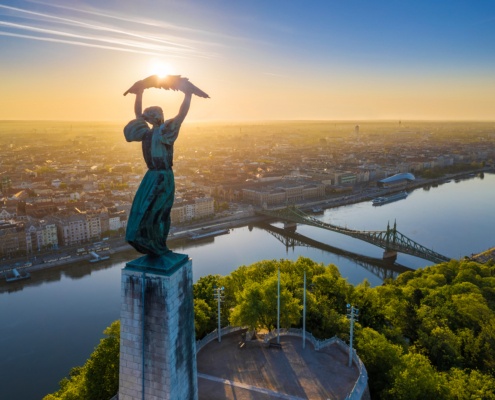
The Highest Hill of the Downtown is Gellért Hegy
Gellért Hill is one of Budapest’s most iconic landmarks, towering over the Danube River on the Buda side of the city. The hill rises 235 meters above the sea level. However, since the Danube valley in Budapest is approximately 100 meters above sea level, the hill’s relative height is only about 130 meters. Nevertheless, it is called a hill because it faces the Danube with steep cliffs, while hills are typically surrounded by slopes on all sides.
Named after Bishop Gellért who was thrown to his death from the hill, Gellért Hill offers breathtaking panoramic views of Budapest. At its summit stands the Citadella, a fortress built in the 19th century by the Habsburgs as part of their strategy to supervise formerly rebellious Hungary to prevent another uprising, while the Liberty Statue, symbolizes Hungary’s liberation from Nazi occupation. The hill is also home to the Gellért Hill Cave Church, a unique church built into the rockside. Gellért Hill is not only a popular tourist destination but also a beloved spot for locals, offering serene walking paths and tranquil green spaces.
The Highest Hill in Budapest is János Hill
The hill is standing at 529 meters above sea level. This iconic destination has been a favorite spot for excursions in the capital for centuries, with even Sisi, the wife of Franz Joseph, known to enjoy the area. You can reach the hilltop via the Chairlift (Zugliget Libegő) or by bus. Once there, prepare to be amazed by the breathtaking views of Budapest and the surrounding natural beauty. Plan for approximately 4 hours to fully enjoy the experience.
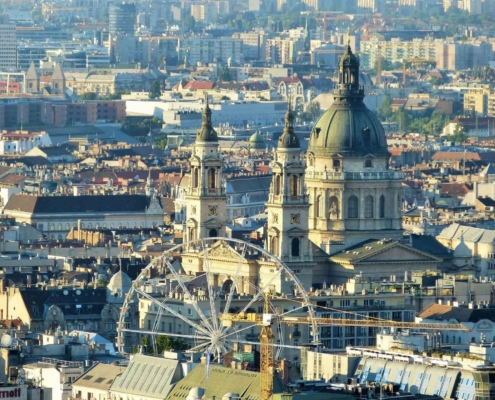
The Biggest Church in Budapest is St. Stephen’s Basilica
St. Stephen’s Basilica is one of the most significant landmarks in Budapest and holds several notable distinctions. Its height of 96 meters, exactly the same height as the Parliament building. It is the largest church in the city with a capacity of 8000 people, with its impressive neoclassical facade and towering dome dominating the skyline. Named after Hungary’s first king, St. Stephen, the basilica is a symbol of the nation’s religious and cultural heritage. Inside, visitors can admire exquisite architectural details, including intricate frescoes, marble columns, and ornate altars. The basilica also houses Hungary’s most sacred relic, the mummified right hand of St. Stephen, which is displayed in a reliquary. With its grandeur and historical significance, St. Stephen’s Basilica is a must-visit destination for tourists exploring Budapest’s superlatives. Join our daily Free Budapest Tours to learn more about St.Stephen’s Basilica.
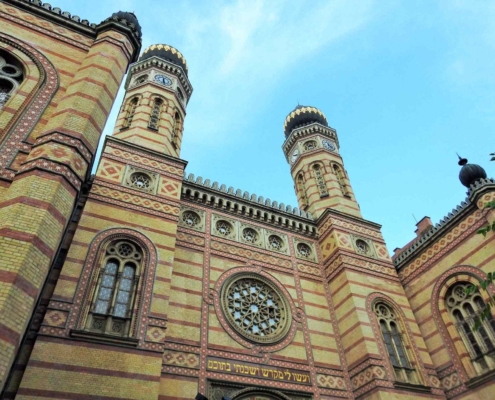
The Biggest Synagogue in Europe is the Dohany Street Grand Synagogue
In the heart of Budapest lies the Dohany Street Grand Synagogue, Europe’s largest synagogue and second largest in the world. When the architectural competition for this grand structure was announced in the mid-1800s, it ignited the creativity of the era’s most esteemed architects. Spanning an impressive 1,200 square meters, with towers soaring 44 meters high, the synagogue stands as a testament to both architectural brilliance and cultural significance. Inside, its vast interior accommodates nearly 3,000 worshipers, with 1,497 seats for men on the main floor and 1,472 for women in the galleries. As the temple of the Neolog Jewry, the synagogue serves as a spiritual and cultural center for the community. Take our daily Free Jewish District Tours for further in-depth information about the Hungarian Jewish history and main landscapes.
The Oldest Building in Buda Still in Use
The Red Hedgehog House ( Vörös Sün Ház in Hungarian) is the oldest continuously used building in Budapest, named after the inn that once operated within it. Its existing structure was erected around 1260, combining several early Gothic and medieval residences in the 18th century. For a long time, it served as the only inn in the Buda Castle District. Join our daily Free Buda Castle District Tours for more information about the medieval part of the city.
The Oldest Building in Pest Still in Use
The Parish Church of the Assumption of the Blessed Virgin Mary church is located on Pest side of the white Elisabeth bridge (Március 15. tér). Its earliest parts date back to the Romanesque period. In its present state, it easily showcases various architectural styles, a Baroque church, but a Gothic sanctuary in the back. Saint Stephen the first Hungarian king and state founder ordered the construction of a church dedicated to the Virgin Mary over the ruins of the former Roman command building. Excavations in the early 2000s uncovered 11th-century graves in the area of the present sacristy. During that time, and for a long while after, burial was only permitted near or inside churches.
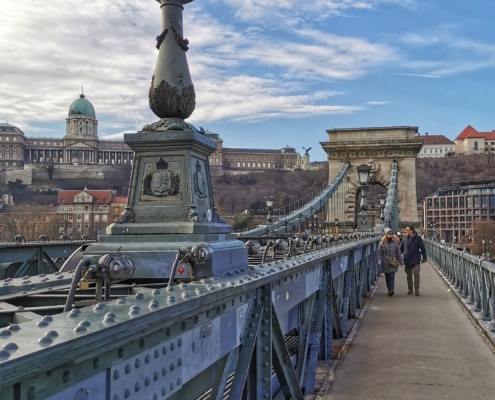
The oldest bridge in Budapest is the Chain Bridge
The oldest permanent bridge in the city is the Széchényi Chain Bridge, which was inaugurated in 1849. Additionally, it holds the distinction of being Budapest’s least congested bridge, as it is not connected to any major thoroughfare and does not allow cars to cross. Join our daily Free Budapest Tours to learn more about the bridge and the legend of its lions.
Budapest’s Largest Residential Building
Budapest’s largest residential building is located in Óbuda, at Flórián Square, more precisely in Szőlő Street. Known as the Faluház (Village House), this housing block contains 886 apartments, housing approximately 3000 people. The Faluház underwent energy efficiency renovations in 2009, including external insulation, replacement of windows, modernization of heating systems allowing for individualized metering, and installation of solar panels on the roof.
Budapest’s Narrowest Residential Building
The Mandl House, situated along the Danube in the Tabán neighborhood of Buda side, boasts a façade measuring 6.2 meters on Várkert Rakpart and 5.5 meters on Döbrentei Street. Its narrow dimensions have earned it the distinction of being the city’s narrowest building. Constructed in a style reminiscent of Hanseatic cities like Amsterdam, the house was later transformed into a tenement building comprising 10 apartments, following a loft conversion. It’s recommended to view the Mandl House from the Pest side, along the Danube Promenade, to appreciate its unique architecture.
Budapest’s Shortest Streets
It’s widely known that the shortest street name in the capital is “Ó” (Old). This street, located behind the State Opera House near Andrassy Avenue, has a unique history. By 1885, Andrássy Avenue was completed, but Ó Street was not considered a particularly elegant place. Instead, it was known for its rather dubious brothels until 1927.
However, in terms of length, downtown Miatyánk Street holds this title. Its history traces back to the time when worshippers hurried to the Lutheran church at Deák Square, reciting the Lord’s Prayer as they passed through this street. Depending on how we define the starting and ending points of the street, we measured its length at approximately 45 meters. With slow-paced steps, we were able to traverse it in 40-45 seconds. In theory, this should allow enough time to recite the Lord’s Prayer (Miatyánk) in your language and Latin. Our daily free tours in Budapest meet within a minute’s walk from this street.
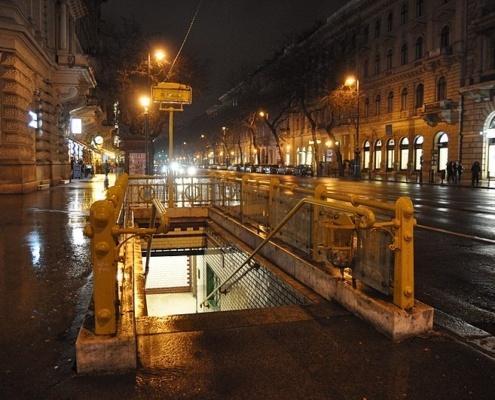
Budapest First Metro Line
The Millennium Underground wasn’t just Budapest’s inaugural metro line that opened in 1896; it was the first of its kind across the entire European continent. While it can’t be credited as Europe’s very first, given London’s earlier underground system, ours was the world’s pioneer in operating on electric power. Its length was predetermined, serving the primary purpose of linking downtown Pest with City Park.
Budapest’s Longest Escalator
The deepest metro stations are those situated along the lines passing beneath the Danube. While Széll Kálmán tér may not be the deepest station, it boasts the city’s longest escalator. Picture the stations: at Batthyány tér, for instance, you ascend to the surface using two escalators. However, at Széll Kálmán tér, you ascend directly from the depths to the surface. This escalator descends to a depth of 38.6 meters, and the journey takes approximately two minutes.
